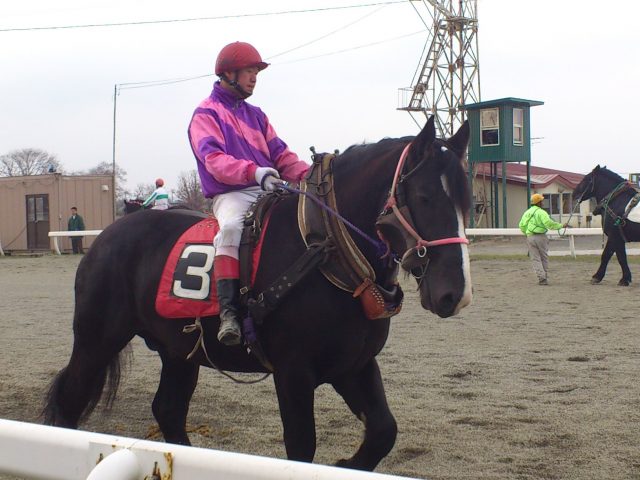Type the name of the breed you're looking for below
[wpdreams_ajaxsearchlite] Don't see the breed your're looking for? Click here and let us know!
Ban’ei horse
| Country Of Origin | Japan |
| History and Background | Ban'ei (輓曳 or ばんえい) is a form of horse racing, unique to the Tokachi area of Hokkaido, Japan. Powerfully built horses compete by pulling heavily weighted sleds up sand ramps while being urged on by jockeys sitting on top of the sleds. The horses used in the races are crosses of Percheron, Breton, and Belgian breeds. Formerly held in a number of places, ban'ei races are now only held at the Obihiro Racecourse. The popularity of the races has waned in recent years and the Obihiro racecourse nearly closed before Softbank, a Japanese mobile phone company known for its tie-up with Apple and the iPhone, provided funds for the races to continue. Former racehorses are usually sold for meat rather than put out to pasture until old age. Ban’ei has its probable origin in agricultural work, when horses were used to cultivate crops and pull sleds of wood. Eventually, the horses were tested for speed in festivals of the late Meiji Era. The popularity of ban’ei grew, and in 1953, Hokkaido’s four cities (Kitami, Asahikawa, Iwamizawa, and Obihiro) began to manage ban’ei. They ran the races until three of them closed operations in 2007 due to declining revenues. Obihiro racecourse is the only one currently active and it has racing almost every Saturday, Sunday, Monday. |
| Use Today | Agriculture work, Racing horse |
| Height | 14.2 and 16 hands high (56-64 inches, 142-162 centimeters) |
| Colour | All solid colours. |
| Characteristics | Ban’ei horses are larger than other types of racehorses. They are bred by crossing some heavy or robust breeds: Percheron, Breton, and Belgian and their weight can surpass 1 metric ton; twice that of a thoroughbred. Today, they are registered as Nihon Bankei Shu (日本輓系種) by Japan Equine Affairs Association. Colours of bay, chestnut, flaxen chestnut, black, gray and even varieties roans have been recorded to studbook. There has even been few patterned ban'eis. Only small amount of foals born yearly are registered for racing as two year olds. Horses that wont pass inspection are sold for human consumption. Because of the amount of bloodline mixing there is a great deal of variation in the confirmation of the Ban-ei horses. |
| Personality and Temperament | Strong and docile |
| Other Considerations | There are some differences between a standard flat race and ban’ei. In ban’ei, a horse has not finished the race until the end of the sledge passes the finish line. Second, horses can stop after passing the first cant. Sometimes, jockeys make their horses stop to give them a rest before climbing the second cant. Third, jockeys do not ride the horse. They sit on the sledge. Fourth, jockeys do not have a separate riding crop or horsewhip. They use only the reins for control and to urge the horses. Amount of weight which horse has to pull is determined by several factors: age (two-year olds and mares get allowances), total money earned (determines both group and rating), group horse is in at the meeting (from 1-26) and "rating" of a group (Open, A1, A2, B1, B2, B3, B4, C1, C2 or D.) In short, system is very similar to allowance system in Japanese thoroughbred racing. (Weight allowance of jockeys is counted either in 10 kg or 20 kg.) |



